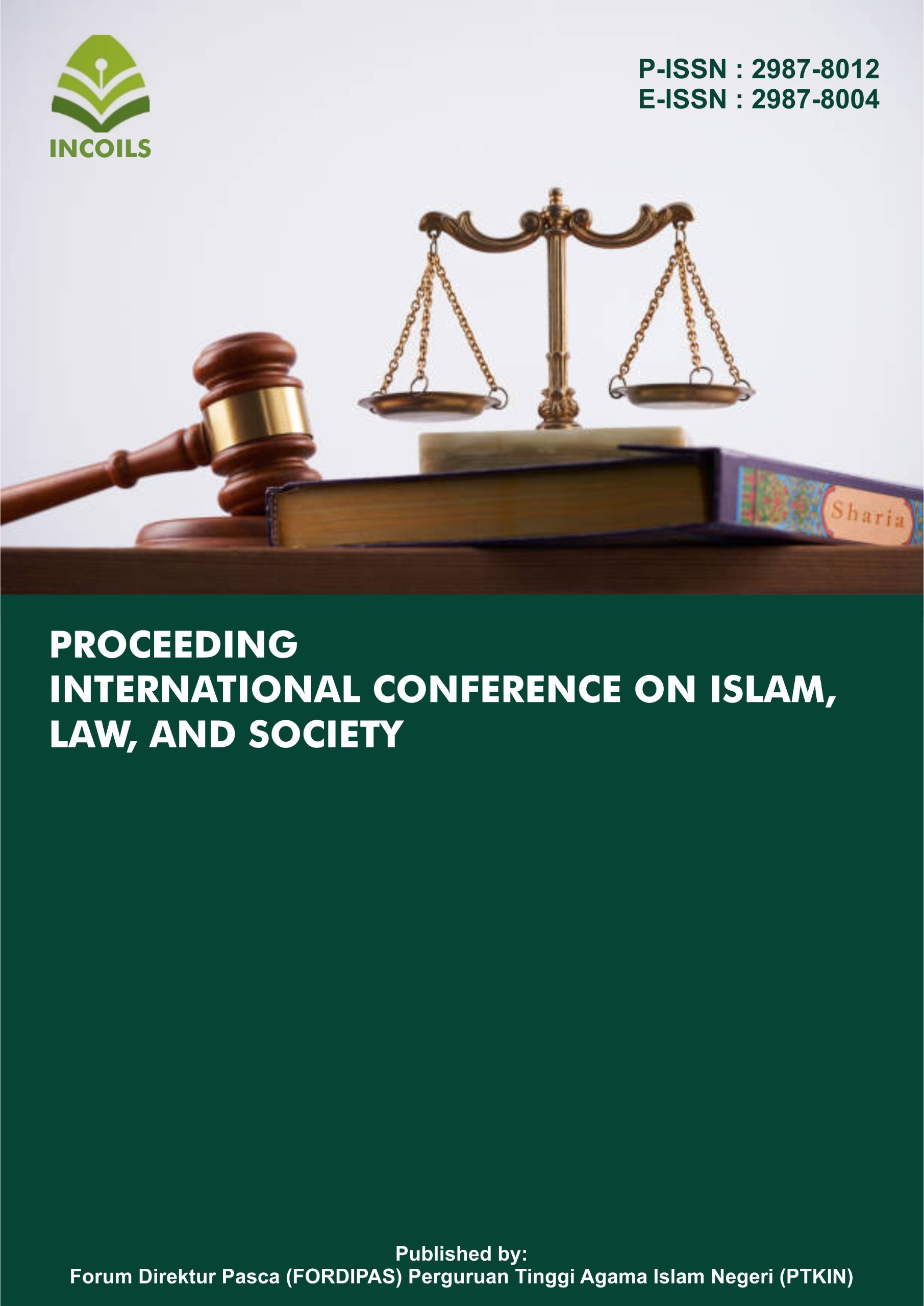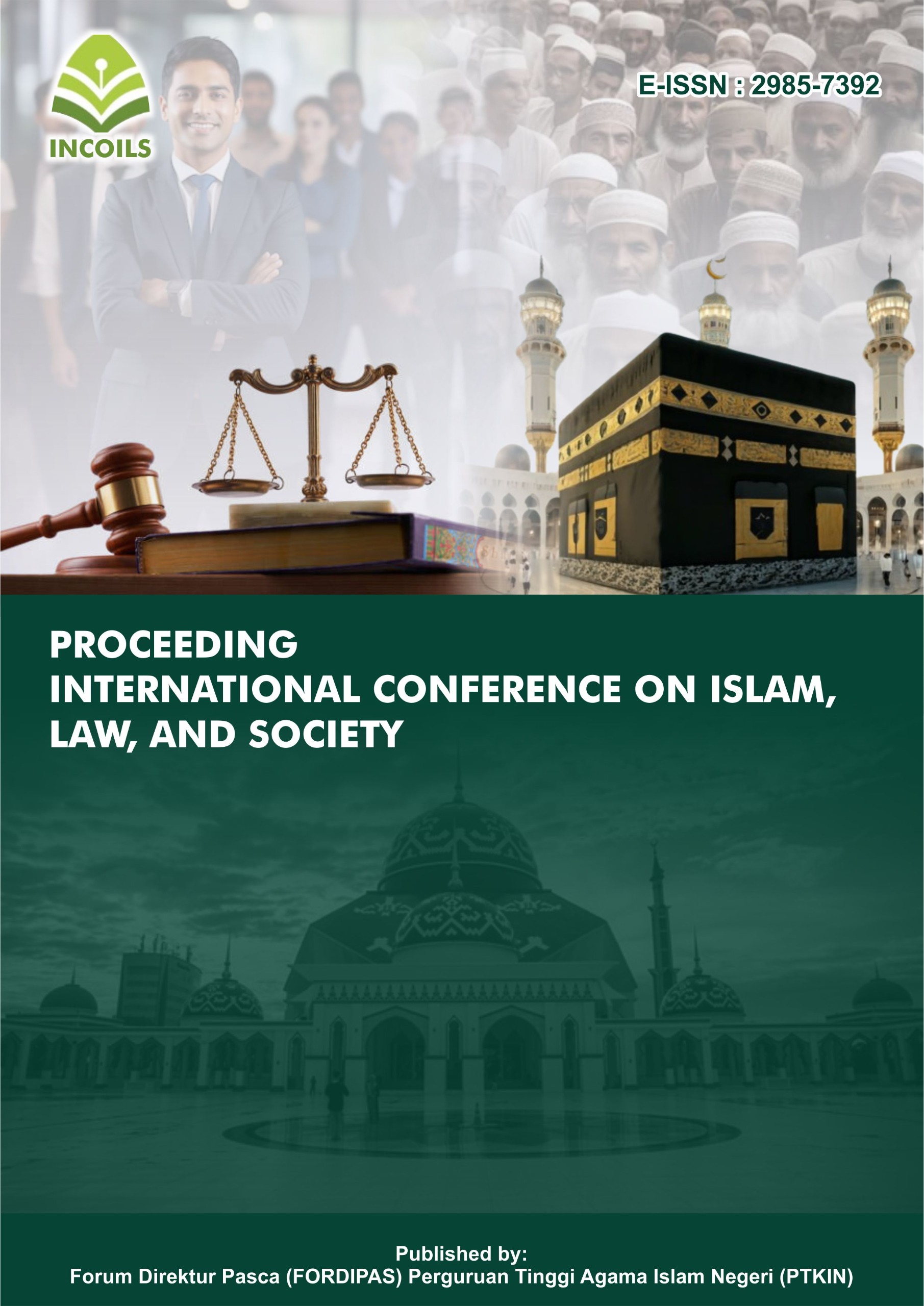The Relationship Between Self-Confidence and Social Interaction Among Adolescents
DOI:
https://doi.org/10.70062/incoils.v2i1.297Keywords:
Self-Confidence, Social Interaction, AdolescentsAbstract
The present study aimed to examine: (1) the level of self-confidence among adolescents, (2) the level of social interaction among adolescents, and (3) the relationship between self-confidence and social interaction among adolescents residing at UPT PSBR Blitar. This research employed a correlational design, utilising the entire population as the sample, as the total number of participants was fewer than 100. Data were analysed using the Pearson product-moment correlation technique. The findings revealed that both self-confidence and social interaction levels among adolescents were within the moderate category. The results of the correlation test indicated a coefficient value (rxy) of 0.411 with a significance level of 0.00 < 0.05 and a sample size of N = 50. It can therefore be concluded that a higher level of self-confidence is positively associated with a higher level of social interaction. Based on the correlation coefficient interpretation, the value of rxy = 0.411 falls within the range of 0.400 to 0.599, which corresponds to a moderate correlation.References
Ahmadi A. (2005). Psikologi Sosial. Rineka Cipta.
Ambarwati, S., Suhartono, S., & Nurhasanah, N. (2021). Pengaruh Kepercayaan Diri dan Motivasi Belajar terhadap Kemampuan Berpikir Kritis pada Siswa Sekolah Dasar. Edukatif : Jurnal Ilmu Pendidikan, 3(4), 1974–1984. https://edukatif.org/index.php/edukatif/article/view/1047
Arikunto. (2006). Prosedur Penelitian Suatu Pendekatan Praktik. PT RINEKA CIPTA.
Azwar S. (1992). Validitas Reliablitas. Pustaka Pelajar.
Azwar Saifuddin. (2013). Validitas Reliabilitas. Pustaka Pelajar.
Belford, N. (2017). International students from Melbourne describing their cross-cultural transitions experiences: Culture shock, social interaction, and friendship development. Journal of International Students, 7(3), 499–521. https://doi.org/10.5281/zenodo.569941
Boeree George C. (2006). Psikologi Sosial. Yogyakarta Prismasophie.
Elizabeth Hurlock. (1980). Psikologi Perkembangan. Gramedia.
Feldman, R. D & Papalia, D. . (2015). Menyelami Perkembangan Manusia. Salemba.
Gerungan W. (2004). Psikologi Sosial.
Haditono A.M.P, K. G. . dan M. (2020). Psikologi Perkembangan: pengantar dalam berbagai bagiannya. Gajah Mada Universitas Press.
Hayati R. & Sahputra D. (2019). Kontribusi Kepercayaan Diri dan Kecerdasan Emosi terhadap Interaksi Sosial. Universitas Muslim Nusantara Al Washiliyah.
Ilham Robby. (2018). Hubungan Kepercayaan Diri dengan Interaksi Sosial pada Mahasantri Putra Ma’had Sunan Ampel Al-aly UIN Malang. UIN Malang.
Islamy, R. M. (2018). Hubungan Antara Kepercayaan Diri Dengan Penyesuaian Sosial Pada Peserta Didik Kelas VII di Smp Negeri 3 Bandar Lampung. Journal of Chemical Information and Modeling, 53(9), 1689–1699.
Ivan Qomusuddin Fanani. (2019). Statistik Pendidikan (Lengkap Dengan Aplikasi IMB SPSS Statistic 20.0). Deepublish.
Julianita. (2011). “SPSS vs LISREL” Sebiah Pengantar, Aplikasi Untuk Riset. Salemba Empat.
Kartono Dr. Kartini. (2018). Psikologi Sosial. Rajawali Pers.
Khomsah, Rizani, N., Mugiarso, H., & Kurniawan, K. (2018). Layanan Konseling Kelompok untuk Meningkatkan Resiliensi Siswa. Indonesian Journal of Guidance and Counseling : Theory and Application, 7(2), 38–43. journal.unnes.ac.id/sju/index.php/jbk
Lauster. (1978). The Personality. Pan Books.
Malentika, N., Itryah, & Mawardah, M. (2018). Hubungan Antara Interaksi Sosial Dengan Suasana Hati Pada Mahasiswa. Psyche, 11(2), 97–106.
Mawardah, M. Itryah & Malentika, N. (2017). Hubungan antara Interaksi Sosial dengan Suasana Hati pada Mahasiswa. Jurnal Ilmiah PSYCHE.
Muhammad Nifiannoor. (2009). Pendekatan Statisktika Moderen untuk Ilmu Sosial. Salemba Empat.
Pasaribu, S. (2016). Hubungan Konsep Diri Dan Dukungan Sosial Teman Sebaya dengan Interaksi Sosial Mahasiswa. Jurnal Analitika Magister Psikologi UMA, 8(1), 64–78.
Peter Lauster. (2006). Tes Kepribadian. Bumi Aksara.
Rachmawati. (2015). Hubungan Antara Interaksi Sosial Dengan Kepercayaan Diri Dalam Public Speaking. Fakultas Psikologi Universitas Muhammadiyah Surakarta.
Risnawati & Ghufron. (2011). Psikologi Remaja. BPK Gunung Mulia.
Sahputra, D. & H. R. (2019). Konstribusi Kepercayaan Diri dan Kecerdasan Emosi terhadap Interaksi Sosial. Prosiding Seminar Nasional & Exspo Hasil Penelitian dan Pengabdian Masyarakat 2019. Universitas Muslim Nusantara Al Washiliyah.
Sarjono. (2011). SPSS vs LISREL “Sebuah Pengantar, Aplikasi Untuk Riset.” Salemba Empat.
Satiadarma. (2000). Dasar-Dasar Psikologi Olahraga. Pusta Sinar Harapan.
Setiawan, B., Solehuddin, M., & Hafina, A. (2019). Bimbingan Kelompok dengan Teknik Self-Instruction untuk Meningkatkan Self-Regulation Siswa. KONSELING: Jurnal Ilmiah Penelitian dan Penerapannya, 1(1), 1–10. https://doi.org/10.31960/konseling.v1i1.317
Soekanto & Soerjono. (2012). Sosiologi Suatu Pengantar. PT Rajawali Pers.
Soekanto S. (n.d.). Sosiologi Suatu Pengantar. Raja Grafindo Persada.
Soekanto S. (2012). Sosiologi Suatu Pengantar. PT Rajawali.
Soerjono. (2012). Sosiologi Suatu Pengantar. PT Rajawali Pers.
Sugiyono. (2015). Metode Kualitatif R & D. Alfabeta.
Sugiyono. (2018). Metode Penelitian kuantitatif, kualitatif, dan R&D. Alfabeta.
Thantawy. (2005). Kamus Istilah Bimbingan dan Konseling. Grasindo.
Walgito. (2010). Pengantar Psikologi Umum. ANDI.
Wayan, N., Puspitayanti, W., Sulastri, M., & Sedanayasa, G. (2014). Hubungan Konsep Diri Dan Interaksi Sosial Terhadap Hasil Belajar Siswa Kelas X Sma Negeri 1 Sukasada Semester Genap Tahun Pelajaran 2013 / 2014. Ilmiah Bimbingan Konseling Undiksha, 2(1), 1–10. https://ejournal.undiksha.ac.id/index.php/JIBK/article/view/3705
Zahara, F. (n.d.). MEDAN. 77–87
Downloads
Published
How to Cite
Issue
Section
License

This work is licensed under a Creative Commons Attribution-ShareAlike 4.0 International License.







